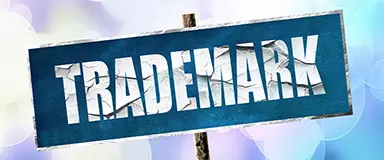Complete step-by-step guide to registering a trademark with the USPTO in 2025. Learn filing requirements, costs ($350 base fee), timelines (12-18 months), and maintenance requirements.
International Trademark Budgeting: Hidden Costs and Planning Tips
Written by Adrian Torres ·

When you decide to take your business globally, you’ll naturally be inclined to file for an international trademark to prevent copycats and make your branding uniform wherever you are (with localization adjustments if needed). But are you truly prepared to shell out for such an expense?
Most businesses tend to budget for two obvious costs: application fees and basic legal services. But these are far from the only fees and costs you’ll need to pay, which can triple the budget. Let’s break down international trademark protection budgeting.
The Initial Cost
International trademarks have a few levers you can pull to make the trademarking process easier and more streamlined, but they usually don’t make it any cheaper.
Madrid Protocol Filing Structure
The Madrid Protocol is perhaps the most streamlined option for international filing, and it even involves three distinct “fee buckets.” First, there’s the Madrid Protocol fee of about $750. Second, individual country fees range from $100 to $850 per country, as each country charges its own filing fee. Finally, legal fees typically start at $950 and increase depending on how many countries you want to file in.
Direct Filing Costs
For businesses filing in just one or two countries, direct filing via local attorneys might be more cost-effective than the Madrid Protocol. Direct trademark filing will typically cost $1,500 to $2,500 per country, with costs varying based on local filing fees and the amount of work required.
European Union Strategy
The European Union Trademark (EUTM) covers all EU member countries with an initial filing fee of about $1,000 USD for a single class. Additional classes cost approximately $60 for the second class and $180 for each subsequent class. Local EU attorneys typically charge $600 to $800 to assist with the filing (usually a bit less than U.S. attorneys).
Translation and Localization Expenses
Translation fees can vary wildly, from $0.15 USD per word for international patent applications and $0.10 USD per word for trademark applications, but costs increase significantly based on complexity and language pairings. To put it simply, some languages will cost more to translate than others, but it might be a mandatory process if the jurisdiction only accepts documents in the local language.
Adding to that is cultural adaptation consulting, which “transliterates” the trademark to be understandable in different languages or cultures. Cultural adaptation consulting can cost from $1,000 to $5,000 per major market, but it’s a small price to pay to avoid embarrassing cultural missteps.
The Maintenance
Once your trademarks are registered, it’s time for filing fees, examination fees, maintenance fees, and renewal fees to make their entry. These all vary depending on the type and duration of IP, as well as the country for the trademark.
Renewal Costs
Most countries require a trademark to be renewed every 10 years, and for many of them, renewing a trademark comes with similar filing costs as registering it. Unlike domestic trademarks with predictable 10-year cycles, international trademarks could create a complex web of different renewal schedules and requirements.
Ongoing Legal Expenses
Legal fees for trademark applications average $1,000 USD per class in the U.S., but they can increase significantly based on mark complexity and class numbers. Annual trademark monitoring services cost $300 to $1,200 per trademark per year to catch infringement early when it’s cheaper to address. Use evidence preparation and filing runs $500 to $2,000 per country every few years, depending on local requirements.
Enforcement Fees
Enforcement fees vary dramatically based on IP type and scope. Trademark infringement cases cost, on average, $375,000 USD per class, with costs increasing based on mark complexity and amount at stake.
And even simple enforcement actions like sending cease-and-desist letters or pursuing litigation in foreign courts can be expensive and complex, often requiring assistance from local legal experts. Each attempted enforcement action can cost between $300 and $2,500, depending on the complexity of the case and whether you actually have proper registrations to back you up.
Opportunity Costs
Another aspect that is less financially based is the opportunity cost of needing to file a trademark registration. This process can take some time, especially if you want it done right by trademark protection experts. As such, you will likely need to carefully plan when you want to enter a foreign market, as that will depend on the timeline of obtaining a trademark. In some cases, you may need to modify your trademark to avoid infringement in a different market.
Regardless of why you’re delayed, the longer you wait, the higher the odds that someone with a similar product gets to market and grabs your potential customers.
Why Go Through the Trouble?
With all these stacking costs, you might be wondering how to calculate if the entire endeavor is worth the hassle. There are a few different ways to determine the potential ROI (return on investment) from registering an international trademark.
Revenue Protection Value
Calculate the percentage of your revenue each trademark actually protects. Your primary brand trademark often protects 80% to 100% of your revenue since customers buy based on brand recognition. Product line trademarks usually protect 10% to 40% of revenue per mark, depending on market distinctiveness. Defensive trademarks prevent competitor confusion that could erode market share.
Market Entry ROI Formula
For each new market, use this calculation: projected revenue from the protected brand minus total trademark costs equals net brand protection value. If your trademark protection in Germany costs $5,000 but enables $200,000 in annual revenue that wouldn’t be possible without that brand protection, your ROI is 3,900%.
Enforcement Savings Value
Track how trademark registrations reduce enforcement costs over time. Registered trademarks typically cost less than half to enforce than unregistered rights because you don’t have to prove common law usage. Trademark registrations enable faster takedowns on platforms like Amazon and social media, saving months of dispute resolution.
Putting It All Together
In general, expect the first year of trademark registration and protection to cost the most since you need to do the legwork to make it all happen. After that, ongoing costs can be roughly a third of the initial price per year. This can add up a lot over time, so make sure you research which markets you want to make a trademark for.


